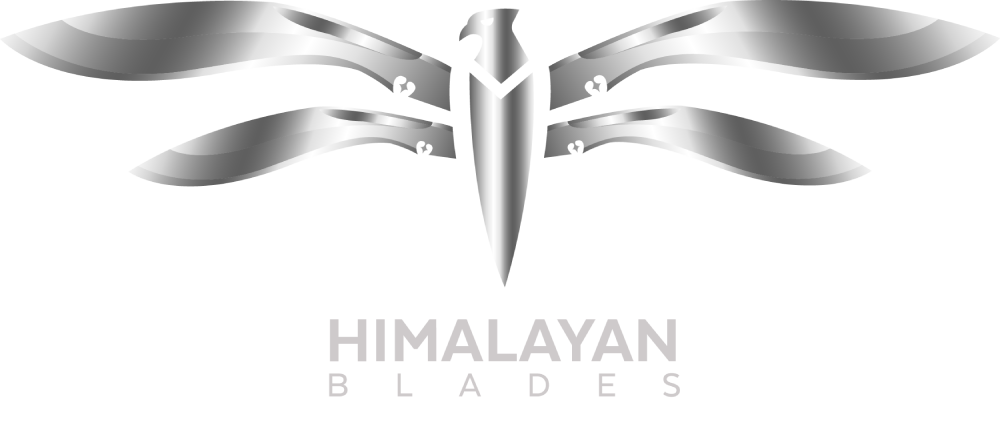
The Art of Forging a Khukri: A Peek into Traditional Blade-Making Techniques
The Khukri, an iconic blade steeped in Nepalese history and culture, is more than just a weapon; it is a symbol of craftsmanship, strength, and tradition. For centuries, the art of forging a Khukri has been passed down through generations, where each blade tells a story of heritage, resilience, and skilled hands. In this blog, we will delve into the time-honored techniques behind crafting a Khukri and why this process continues to captivate blade enthusiasts worldwide.
The Legacy of the Khukri
The Khukri is synonymous with the Gurkhas, renowned soldiers from Nepal, who carried these blades as both a tool and a weapon. With its distinctive forward-curved blade, the Khukri is known for its versatility, used in combat, agriculture, and ceremonial purposes. However, the real beauty of the Khukri lies in the traditional forging process, which has remained largely unchanged for centuries.
Traditional Blade-Making: The Role of the “Kami”
The forging of a Khukri is an art form, meticulously carried out by skilled craftsmen known as “Kamis.” These artisans belong to an ancient community that has specialized in metalwork for generations. Every step in the creation of a Khukri is a labor of love, from selecting the raw materials to hammering the blade into its iconic shape. A key aspect of their work is the deep-rooted knowledge and experience passed down through their families.
Step-by-Step Guide to Forging a Khukri
1. Choosing the Right Steel
The first and most critical step in making a Khukri is selecting the right steel. Traditionally, Kamis often used scrap metal, like truck leaf springs, which provided the right balance of durability and flexibility. Modern blades may use high-carbon steel for enhanced sharpness and longevity. The choice of steel ensures that the final product is strong yet flexible enough to withstand forceful use.
2. Heating and Shaping the Blade
Once the steel is chosen, it is heated in a furnace until it reaches the correct temperature for forging. The Kami then hammers the heated steel into the rough shape of a Khukri. This is an intensive process that requires skill and precision. Hammering the steel not only shapes the blade but also strengthens it by compressing the metal’s molecules.
3. Quenching for Hardness
After the blade is shaped, it undergoes a quenching process. The red-hot steel is dipped into water or oil to cool it quickly. This rapid cooling process hardens the blade, making it capable of retaining a sharp edge. The quenching step is vital in ensuring the durability and toughness of the Khukri, especially since it needs to perform a range of tasks, from cutting wood to handling rigorous combat situations.
4. Grinding and Sharpening
Once the blade is quenched, it is carefully ground and polished to refine its shape and edge. This step gives the Khukri its signature curved look and sharp edge. Skilled craftsmen use hand tools for sharpening, ensuring the blade’s edge is honed to perfection. Depending on the intended use of the Khukri, the sharpness of the blade can vary, but in all cases, it must maintain its cutting prowess.
5. Creating the Handle
The handle of a Khukri is equally important as its blade. Traditionally, handles were made from materials like wood, buffalo horn, or even bone. Modern versions may feature more contemporary materials, but the method of attaching the blade to the handle remains true to traditional techniques. The handle is secured tightly to ensure a comfortable and firm grip, crucial for the blade’s functionality.
6. Final Touches: Polishing and Fitting the Sheath
The final step in crafting a Khukri involves polishing the blade to a mirror finish. This aesthetic element adds to the blade’s allure, but more importantly, it prevents rust and corrosion. The Khukri is then fitted with a leather or wood sheath, often hand-decorated, which protects the blade and adds to its ceremonial significance.
The Significance of Handcrafted Khukris
A hand-forged Khukri is not just a functional blade; it is a piece of art. Each Khukri carries with it the soul of the artisan who created it, making it a unique work that stands apart from machine-manufactured blades. This is why collectors and enthusiasts alike treasure handmade Khukris, as each blade reflects the legacy of its maker.
Preserving the Tradition in a Modern World
While modern technology and machines can replicate the shape of a Khukri, they cannot replicate the heart and soul that goes into a hand-forged blade. In today’s world, where mass production dominates, the art of forging Khukris by hand is more valuable than ever. Himalayan Blades, for example, keeps this tradition alive by blending time-honored techniques with modern precision, ensuring that each blade is not just a product but a piece of heritage.
Conclusion
The art of forging a Khukri is a testament to the enduring traditions of craftsmanship. It showcases the perfect blend of artistry, skill, and cultural heritage. Whether used for practical purposes or as a collector’s item, a handcrafted Khukri is a timeless symbol of strength, resilience, and Nepalese pride. In every blade lies the spirit of the mountains, the hands of the Kami, and the history of a people who have mastered the art of blade-making.








